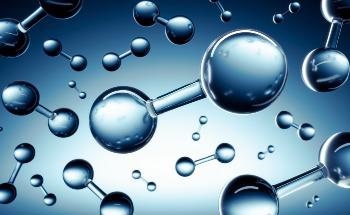A family of nonprecious metal derivatives capable of catalyzing fuel cell reactions nearly as well as platinum, at a much less cost has been discovered by Cornell University chemists.

Image Credit: peterschreiber.media/shutterstock.com
Their results pave the way for a future where hydrogen fuel cells efficiently drive cars, generators, and even spacecraft with negligible greenhouse gas emissions.
These less expensive metals will enable wider deployment of hydrogen fuel cells. They will push us away from fossil fuels and toward renewable energy sources.
Héctor D. Abruña, the Émile M. Chamot Professor, Department of Chemistry and Chemical Biology, College of Arts and Sciences, Cornell University
Abruña, along with co-authors Francis DiSalvo, the John A. Newman emeritus professor of chemistry; doctoral student Rui Zeng; Yao Yang, Ph.D. ’21; Xinran Feng, Ph.D. ’21, and Huiqi Li, a visiting graduate student from Xiamen University; and Lauryn M. Gibb ‘22, published their study findings in the February 2nd issue of the journal Science Advances.
As long as combustion engines crowd the streets and fill the skies with smog, it is tough to envisage a sustainable future for transportation. Hydrogen fuel cells, which turn hydrogen straight into electricity with only water and a tiny amount of heat as byproducts, are favorable renewable substitutes.
A vital part of the fuel cell is the oxygen reduction reaction (ORR), a notoriously slow process—Abruña frequently refers to it as “God’s collective punishment to electrochemistry”—that is conventionally accelerated by platinum and other precious metals.
Platinum being a model catalyst conducts electricity, catalyzes the most temperamental reactions with poise, and is sturdy enough to endure the harsh, acidic setting of a fuel cell. But it can be excessively costly.
Recently, however, more forgiving alkaline fuel cells have garnered importance, increasing the likelihood that less expensive metals, once eliminated for their susceptibility to acidic surroundings, might substitute platinum in these gentler, advanced fuel cells.
Abruña and his team aimed to build an economical material, suitable for an alkaline fuel cell, which would convey electricity and catalyze the ORR reaction in the same efficient manner as platinum.
Transition metal nitrides (TMNs) were a clear choice, and DiSalvo is an international expert on these materials, Abruña stated. A group of compounds extracted from cobalt, iron, manganese, and other transition metals, TMNs convey electricity and, when exposed to air, are inclined to develop a thin oxygen-based outer shell that offers an impeccable surface for catalyzing chemical reactions.
After synthesizing a group of TMNs with conductive nitride cores and reactive oxide shells, the researchers tested all the candidate catalysts in a prototype hydrogen fuel cell.
Manganese- and iron-based options made robust showings. Cobalt nitride catalyst turned out to be “the clear winner,” Abruña said, with near equal efficiency to platinum while costing 475 times less (as of February 2nd). Those savings may help push hydrogen fuel cells out of the laboratory and into the market.
If reasonably priced, fuel cells could substitute car batteries and combustion engines with a sustainable option that, fed a constant diet of hydrogen, never needed to recharge, and wasted just 10% of the energy that goes into enabling it to function. By comparison, a standard car engine wastes approximately 75% of its energy.
“Hydrogen fuel cells are enormously powerful, enabling you to run at an efficiency that simply does not exist for more traditional engines,” Abruña said. “People recognize that fuel cells are the way to go. The trick is designing stable and affordable catalysts that make it all possible.”
This research received funding in part from the Center for Alkaline Based Energy Solutions, an Energy Frontier Research Center aided by the U.S. Department of Energy.
Journal Reference:
Zeng, R., et al. (2022) Nonprecious transition metal nitrides as efficient oxygen reduction electrocatalysts for alkaline fuel cells. Science Advances. doi.org/10.1126/sciadv.abj1584.